Australian think-tank Beyond Zero Emissions (BZE), perhaps most notable for its prescience regarding the renewable energy potential of the Northern Territory, has released what could be its most prudent and timely publication yet, its Million Jobs Plan.
The publication is timely because Australia is at a crossroads, and of all countries, Australia needs to be particularly prudent at a crossroads because our roads are so very long. We might not have time to double-back. In reality, Australia has been at this crossroads for at least a decade, evidenced by the seemingly indefinite imbroglio that has been the political climate wars. But the Covid-19 pandemic and the resultant necessity of a planned economic recovery means that Australia needs to make a decision about which road it is going to take.
BZE’s Million Jobs Plan is a green scaffold on which it believes Australia’s economy can rebuild and create 1.8 million new jobs through renewables and low emissions projects over the next five years. The plan already has strong support, including Mike Cannon-Brookes, Ross Garnaut, Malcolm Turnbull, Kevin McCann, and Christiana Figueres.
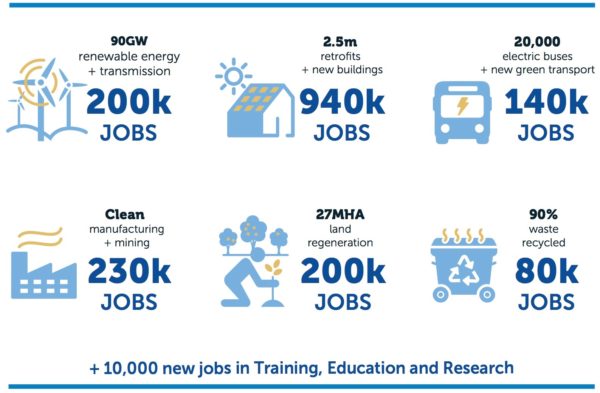
Christiana Figueres, one of the UN architects of the Paris Agreement, joined BZE’s panel discussion for the launch of the Million Jobs Plan from Costa Rica, where a poignant blackout meant that Figueres was only able to virtually join because of a home battery system powered by solar.
Figureres said she was extremely excited about BZE’s plan because it begins to answer a question that has been dogging her for years: “Why is Australia not the leader of renewable energy and renewable industry in the world?” Considering Australia is sitting on such resources, continued Figueres, with such a capable labour-force and on the doorstop of the world’s fastest-growing market, “there is no serious answer to that question.”
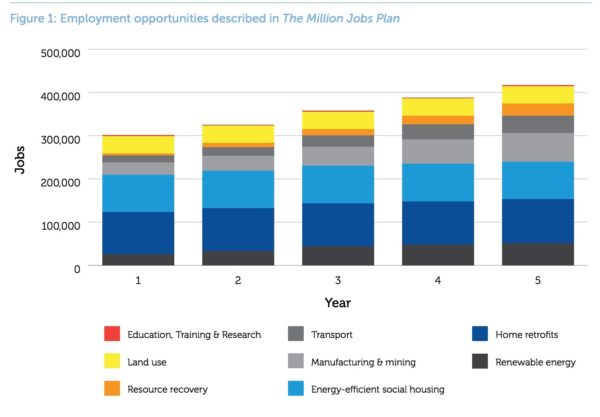
“We can’t afford to build back,” stressed Figueres, “we have to build forward. That is the only way we’re going to get ourselves out of the mess that we’re in…I hope Covid-19 has woken us up to understand that there will eventually be a vaccine for Covid-19, but there is no vaccine for climate change.” The present moment, stressed Figueres, is Australia’s “last chance.”
Figueres also made the perspicacious point that if the world’s economies are going to go into debt for the purposes of Covid-19 recovery packages, then “we have to understand that injection of capital is going to be injected now, but is going to be paid for by future generations. Hence, that capital has to be invested in the interest of future generations.”
Atlassian CEO Mike Cannon-Brookes seconded Figueres’ astonishment. “In a carbon constrained world,” said Cannon-Brookes, “Australia should be a winner. Cannon-Brookes went on to describe how the Sun Cable project, of which he is personally involved, is picking up its feet and walking down the road to renewable exportation, beckoning Australia to follow.
“It’s a very logical project,” said Cannon-Brookes. “We’re connecting one of the most irradiated places on earth to millions and millions of consumers who don’t have access to that…One of the things I really like about the Millions Jobs Plan is that it is not about inventing new technologies, it is about deploying the technologies we already have today, at scale, to generate jobs and economic prosperity for Australia and that is exactly the direction we need to be heading.”
Underlying Cannon-Brookes appreciation for the Million Jobs Plan is a thinly veiled jab at the Morrison Government’s Technology Roadmap. Energy Minister Angus Taylor pushes the Roadmap with his false-dichotomous motto “Technology not taxes,” a false-dichotomy because as Cannon-Brookes pointed out, new taxes aren’t necessary to scale technologies and resources we already have.
The Million Jobs Report’s renewable energy proposal is to build 90 GW of solar and wind energy, supported by new transmission infrastructure and 20 GW of energy storage. As it stands, the pipeline already boasts 160 GW of renewable projects, demonstrating that another 90 GW is by no means unrealistic, just undaunted.
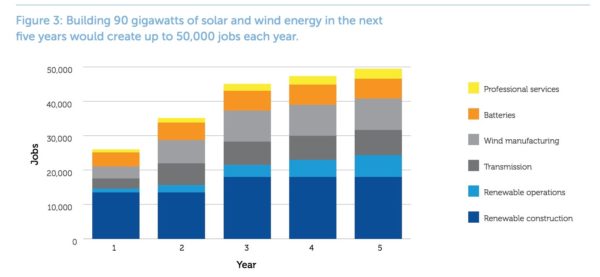
Policy & Investment
As global investment floods to the security of renewable energy (take the 9x oversubscription of NSW’s first renewable energy zone for instance) one such major investor, Deanne Stewart, CEO at First State Super, noted that it is time for policy ambiguity to end, citing the Government’s Technology Roadmap as one such example. “The time is now to get really clear about the details,” said Stewart, “about policy, that allows players like business and super funds to deploy their capital and back the future. At the moment there is a lot of risk out there without a really clear path and policy.”
Cannon-Brookes agreed with Stewart, noting that the Technology Roadmap is an “interesting option but a strategy without a destination.” After all, until the Australian Government sets an emissions target, it is tacitly ignoring a real deadline.
BZE’s first policy proposal to scale up Australia’s renewable prowess is to underwrite renewable energy industrial zones with long-term fixed prices of A$50-55 per MWh. “These zones are likely to be existing industrial heartlands such as Gladstone, the Hunter Valley, Latrobe Valley, and Whyalla, as well as areas with growth potential such as Mount Isa.
Transmission
The Million Jobs Report also makes a strong case for the funding of priority transmission projects (the eight projects AEMO has already identified as critical) in a Covid-19 recovery package. The necessity of transmission upgrades has been bulwarking renewable energy integration for several years, and the new economy requires new infrastructure. As the Australian Energy Market Operator has itself said: “without further grid development…consumers will pay more, for less reliable energy.”
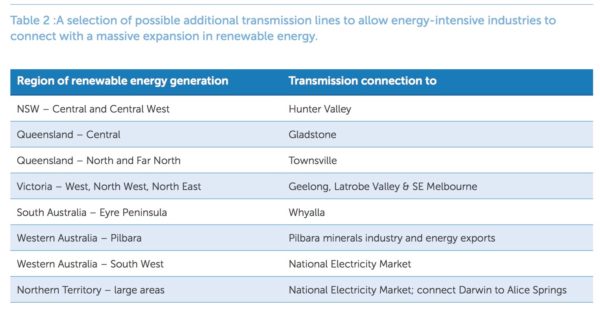
However, as the plan’s lead researcher Michael Lord made note, there is also significant private investment interest in transmission upgrades too. “One example,” says Lord, “is the Copperstring project in North Queensland. A 1000km transmission line linking Townsville to Mount Isa. All along that transmission line we’d open up new resources in wind and solar.” Lord suggested that not only would such an upgrade benefit all Queenslanders, but especially regional Australians like those in Mount Isa, who could expect their energy bills to be cut in half. And indeed, the rest of Australia would benefit as well, for at that western end of the line additional clean energy resources would open up the regions significant clean energy and energy storage metal resources for mining.
Energy Storage
BZE’s Report notes that there are already signs that Australia could develop a battery industry, making reference to Germany battery developer Sonnen’s Adelaide assembly plant as well as that of Alpha-ESS.
BZE posits that the Government needs to grasp this industrial opportunity by boosting domestic demand and looking for export partners, especially in terms of the raw materials of which Australia is so plush (Australia is already the world’s largest exporter of lithium, and mines 9/10 of the elements required to produce a lithium-ion battery).
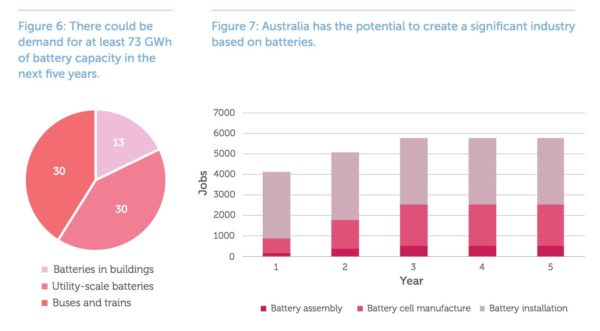
BZE’s Million Jobs Plan includes further in-depth analysis and policy suggestions for better buildings, manufacturing and mining, transport, resource recovery, land use, education training, research, and zero carbon communities, all of which can be founded upon renewable energy transition.
Australia is at a crossroads, but with the Million Jobs Plan, BZE has provided a comprehensive map of the next five years if we take the solar panelled road of renewable energy and sustainable reindustrialisation.
This content is protected by copyright and may not be reused. If you want to cooperate with us and would like to reuse some of our content, please contact: editors@pv-magazine.com.
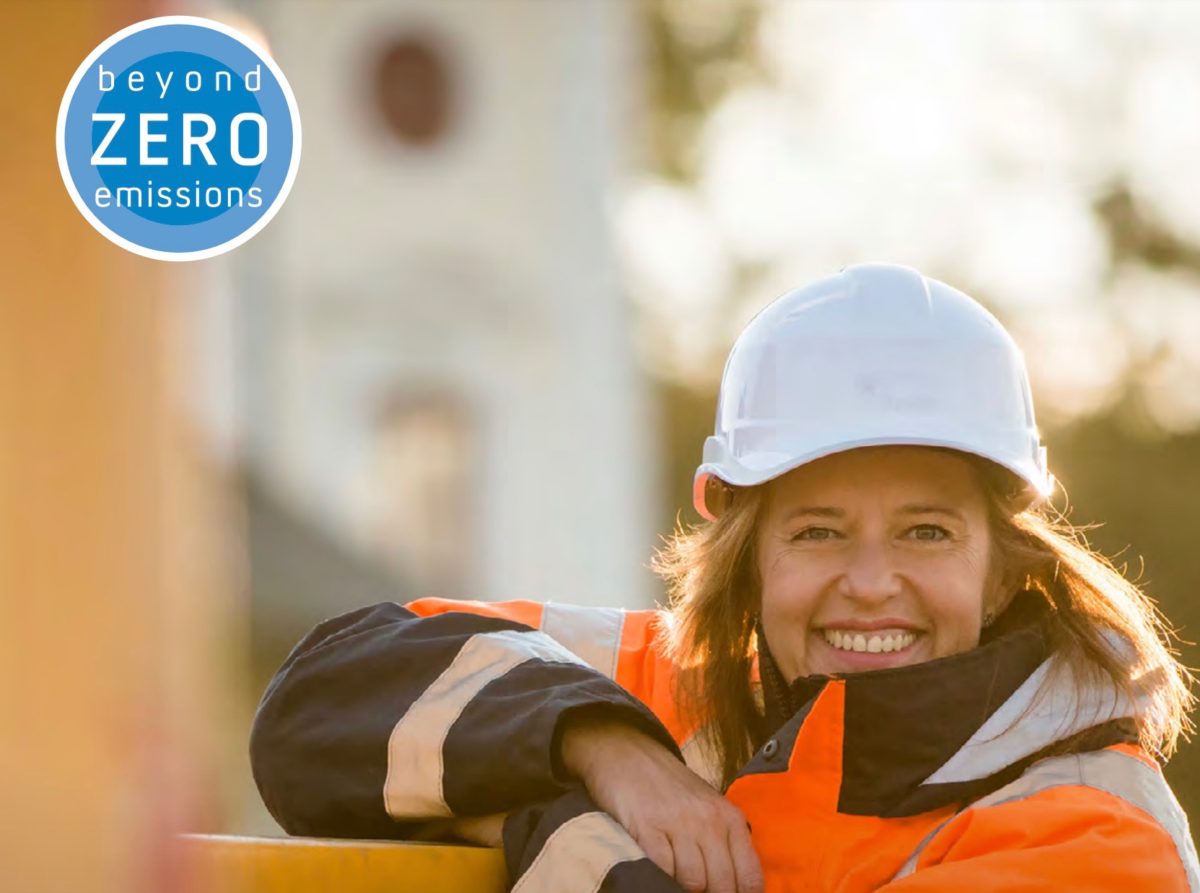








By submitting this form you agree to pv magazine using your data for the purposes of publishing your comment.
Your personal data will only be disclosed or otherwise transmitted to third parties for the purposes of spam filtering or if this is necessary for technical maintenance of the website. Any other transfer to third parties will not take place unless this is justified on the basis of applicable data protection regulations or if pv magazine is legally obliged to do so.
You may revoke this consent at any time with effect for the future, in which case your personal data will be deleted immediately. Otherwise, your data will be deleted if pv magazine has processed your request or the purpose of data storage is fulfilled.
Further information on data privacy can be found in our Data Protection Policy.